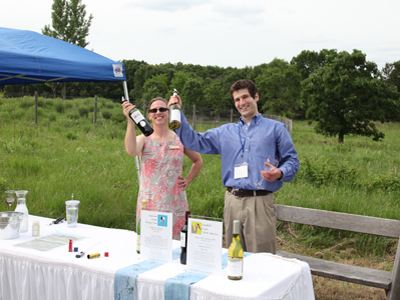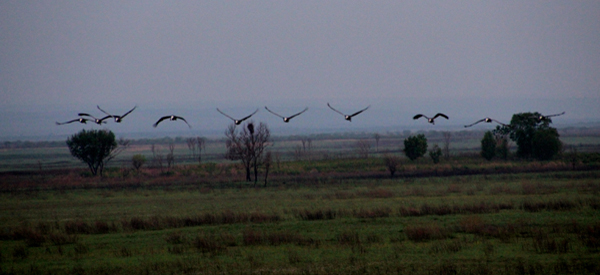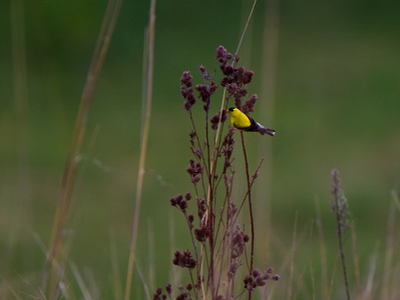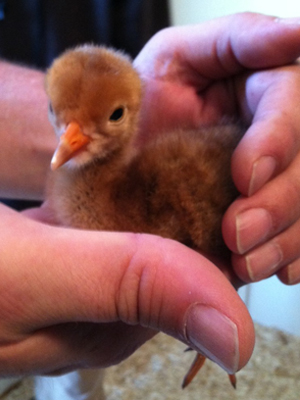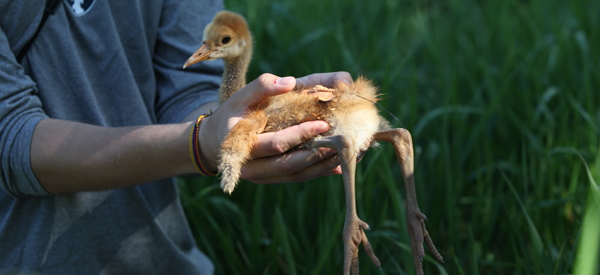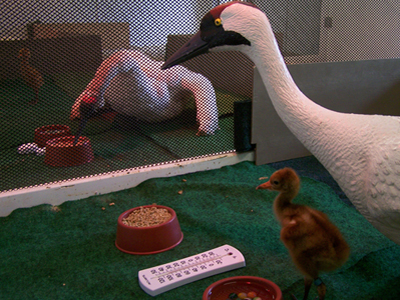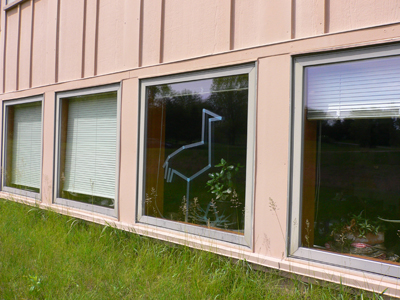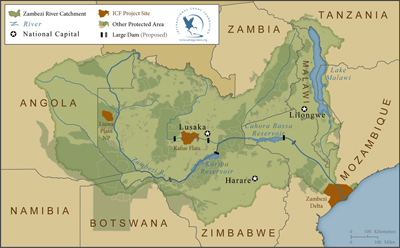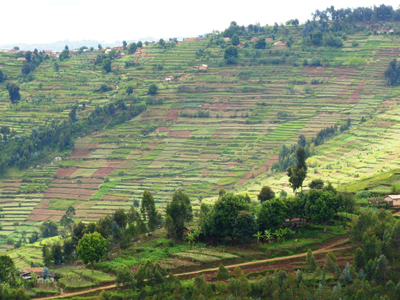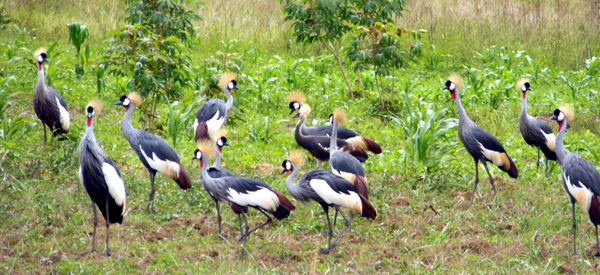 Enjoy a summer evening outdoors with gourmet food, friends and some of the rarest birds on earth. On Saturday, June 23 from 5 – 8 PM the International Crane Foundation (ICF), located on Shady Lane Road between Baraboo and Wisconsin Dells, will be hosting its 3rd Evening with the Cranes to kick off the summer season and to raise awareness about the conservation work ICF is accomplishing around the world.
Enjoy a summer evening outdoors with gourmet food, friends and some of the rarest birds on earth. On Saturday, June 23 from 5 – 8 PM the International Crane Foundation (ICF), located on Shady Lane Road between Baraboo and Wisconsin Dells, will be hosting its 3rd Evening with the Cranes to kick off the summer season and to raise awareness about the conservation work ICF is accomplishing around the world.
Author: Sara
Travels in Muraviovka Park
 In early June as the sun peeped over the horizon about 6:00 a.m. to brighten the distant hills of China, White-naped Cranes lifted from the early morning mists that often cover the great marshes of Russia’s Muraviovka Park. They flew silently into the light to reach a last year wheat field on the elevated terrace near the headquarters of the Park, to feed on leftover grain.
In early June as the sun peeped over the horizon about 6:00 a.m. to brighten the distant hills of China, White-naped Cranes lifted from the early morning mists that often cover the great marshes of Russia’s Muraviovka Park. They flew silently into the light to reach a last year wheat field on the elevated terrace near the headquarters of the Park, to feed on leftover grain.
Discover Wisconsin Sets Out on Birding Adventure with ICF
 Only one place in the world has all 15 species of cranes and only one television show will feature it later this month. The International Crane Foundation (ICF) in Baraboo has been in the spotlight for the past year for filming, and now the episode will air Saturday, June 23 and Sunday, June 24 on the Discover Wisconsin broadcast network, reaching 250,000 viewers across the upper Great Lakes region, including Minnesota, Iowa, Northern Illinois and Upper Michigan.
Only one place in the world has all 15 species of cranes and only one television show will feature it later this month. The International Crane Foundation (ICF) in Baraboo has been in the spotlight for the past year for filming, and now the episode will air Saturday, June 23 and Sunday, June 24 on the Discover Wisconsin broadcast network, reaching 250,000 viewers across the upper Great Lakes region, including Minnesota, Iowa, Northern Illinois and Upper Michigan.
Hooded Crane Hatches at ICF
 In late April two staff from the Denver Zoo visited ICF to receive hands-on training in breeding techniques that we use with our cranes. The staff returned to Denver with new skills that they can hopefully use next season to produce fertile crane eggs (their birds are already responding well to the techniques learned here at ICF) AND with two fertile Hooded Crane eggs from ICF for their collection.
In late April two staff from the Denver Zoo visited ICF to receive hands-on training in breeding techniques that we use with our cranes. The staff returned to Denver with new skills that they can hopefully use next season to produce fertile crane eggs (their birds are already responding well to the techniques learned here at ICF) AND with two fertile Hooded Crane eggs from ICF for their collection.
Linking Rural and Suburban Sandhill Cranes
 Since 1990, ICF has banded over 400 Sandhill Cranes in central Wisconsin, one of the densest nesting populations of cranes known anywhere in the world (we annually track around 60 breeding territories in our 6,400 ha study area). The small leg bands and radio transmitters, the latter placed on a select number of cranes, allow our staff to identify and track individual birds – once we can identify individuals, we can follow their movements, form hypotheses about their behaviors, and test these ideas in the field.
Since 1990, ICF has banded over 400 Sandhill Cranes in central Wisconsin, one of the densest nesting populations of cranes known anywhere in the world (we annually track around 60 breeding territories in our 6,400 ha study area). The small leg bands and radio transmitters, the latter placed on a select number of cranes, allow our staff to identify and track individual birds – once we can identify individuals, we can follow their movements, form hypotheses about their behaviors, and test these ideas in the field.
Chick It Out! ICF Launches Whooping Crane Chick Cam
 Access to the rare and endangered Whooping Crane chicks that are raised each year at the International Crane Foundation (ICF) in Baraboo, WI is granted only to trained ICF staff wearing crane costumes – until now. This chick season ICF is sharing this experience with the world through our live web cam!
Access to the rare and endangered Whooping Crane chicks that are raised each year at the International Crane Foundation (ICF) in Baraboo, WI is granted only to trained ICF staff wearing crane costumes – until now. This chick season ICF is sharing this experience with the world through our live web cam!
Reducing Bird Collisions One Window at a Time
 I couldn’t believe what I was looking at. A painted bunting in Chicago? In January?! These birds belong in the humid swamps of the Gulf Coast, not the frigid streets of the Windy City. Yet there could be no doubt of what I was looking at, as this painted bunting was lying dead in a tray at the Field Museum among 140 other species of birds that have been collected as window kill below the skyscrapers and apartment buildings of Chicago.
I couldn’t believe what I was looking at. A painted bunting in Chicago? In January?! These birds belong in the humid swamps of the Gulf Coast, not the frigid streets of the Windy City. Yet there could be no doubt of what I was looking at, as this painted bunting was lying dead in a tray at the Field Museum among 140 other species of birds that have been collected as window kill below the skyscrapers and apartment buildings of Chicago.
Planning Big for Zambezi River Wetlands
 Zambia is the third leg of my travels in Africa and a perfect final destination. Zambia is truly a wetland paradise, with eight “Wetlands of International Importance” under the Ramsar Convention covering a surface area of nearly 40,000 square kilometers. These include some of the most important wetlands in Africa for cranes.
Zambia is the third leg of my travels in Africa and a perfect final destination. Zambia is truly a wetland paradise, with eight “Wetlands of International Importance” under the Ramsar Convention covering a surface area of nearly 40,000 square kilometers. These include some of the most important wetlands in Africa for cranes.
A New Dawn in Rwanda
 As Kerryn Morrison, ICF’s African Crane Conservation Program Manager, and I drove across the border from Uganda, I was thrilled to experience Rwanda for the first time. Rwanda is the 20th Africa country I have worked in for ICF, and I take joy in learning about the unique cultural, political, and ecological characteristics of each country I visit. Rwanda is no exception.
As Kerryn Morrison, ICF’s African Crane Conservation Program Manager, and I drove across the border from Uganda, I was thrilled to experience Rwanda for the first time. Rwanda is the 20th Africa country I have worked in for ICF, and I take joy in learning about the unique cultural, political, and ecological characteristics of each country I visit. Rwanda is no exception.
Local Communities Protect Crane Wetlands in Uganda
 ICF President Dr. Rich Beilfuss recently returned from a three-week field visit to advance ICF’s Africa Program in three important “crane countries” — Uganda, Rwanda, and Zambia. Following are his field notes from Uganda, detailing the community-based efforts to protect the remaining Grey Crowned Cranes and their habitats in this country.
ICF President Dr. Rich Beilfuss recently returned from a three-week field visit to advance ICF’s Africa Program in three important “crane countries” — Uganda, Rwanda, and Zambia. Following are his field notes from Uganda, detailing the community-based efforts to protect the remaining Grey Crowned Cranes and their habitats in this country.

